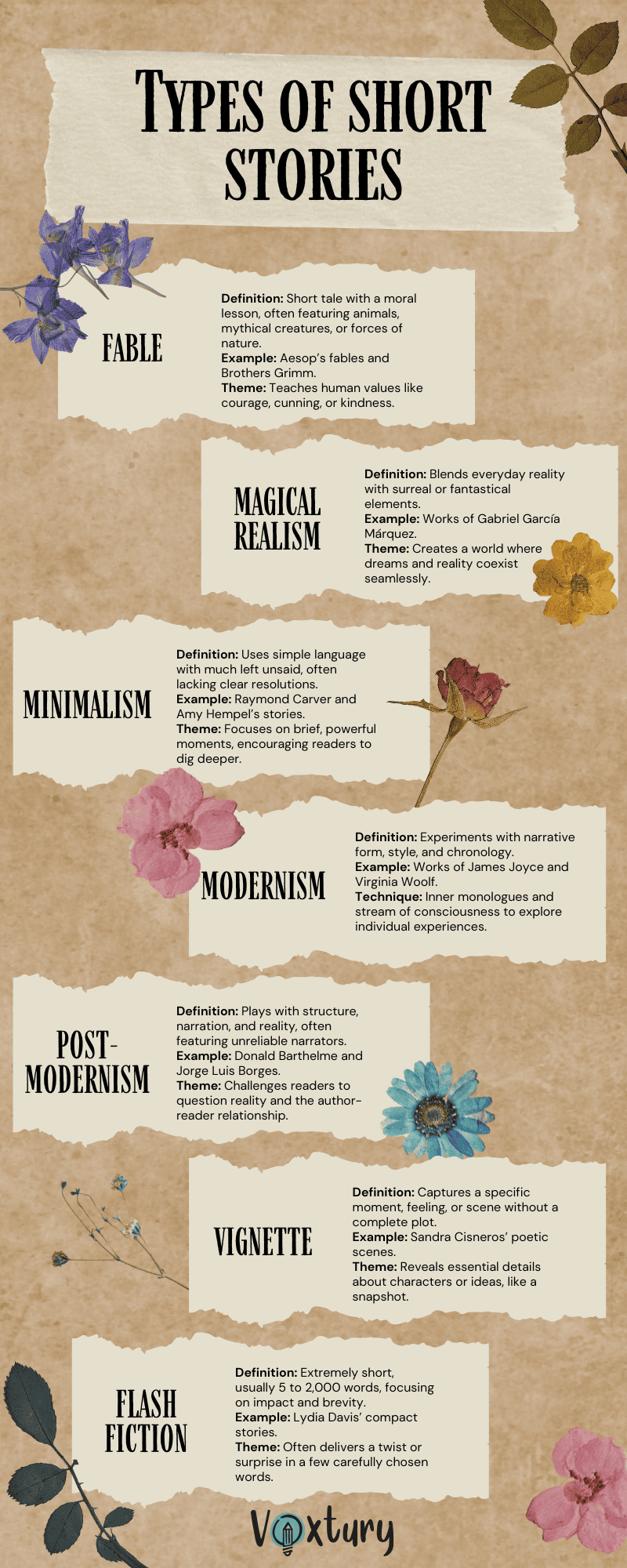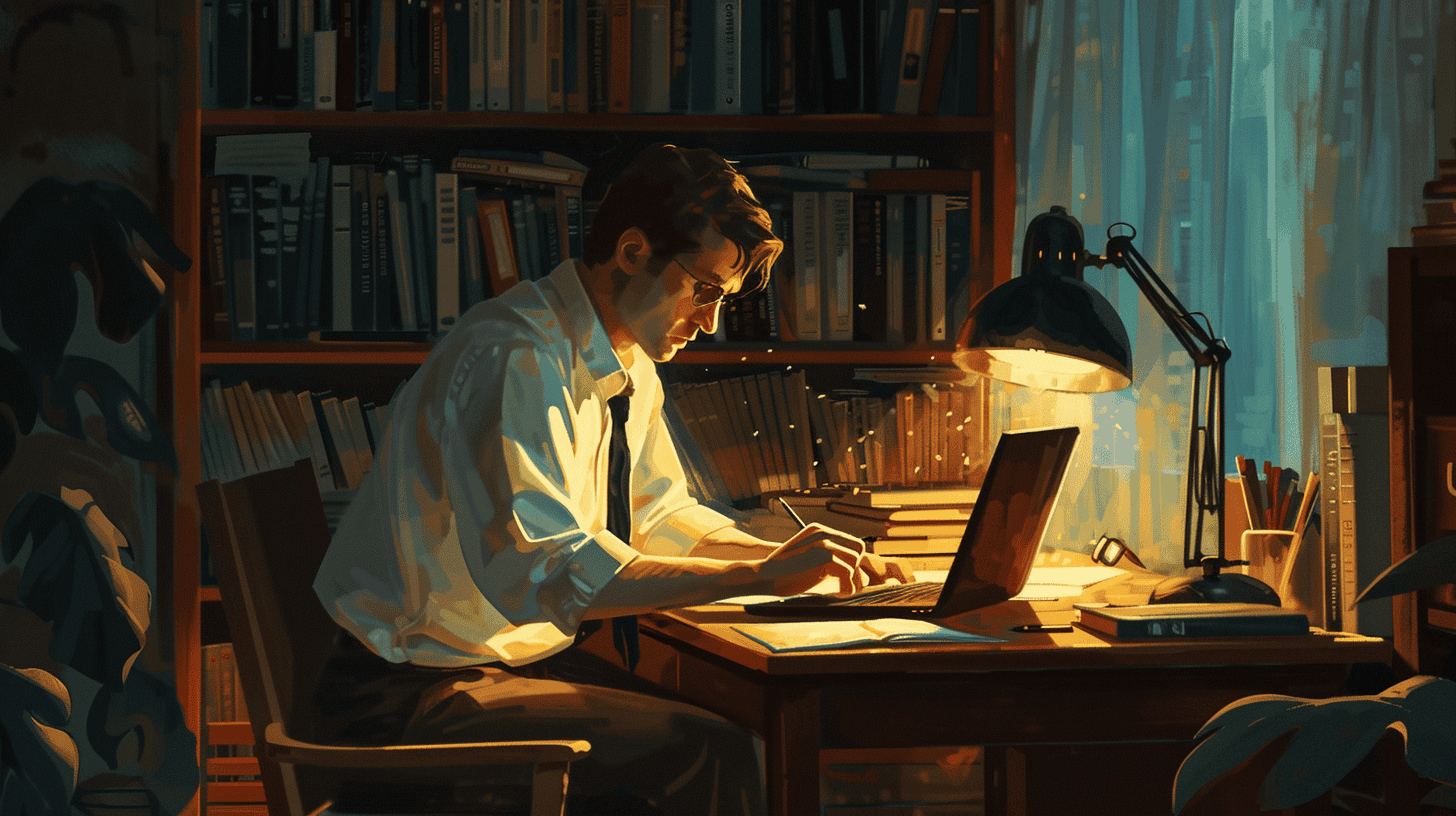Short stories are a special kind of storytelling. They’re short but impactful, giving readers a complete experience in just a few pages. But what really makes a short story different from a novel or a long essay? In a nutshell, a short story focuses on one event, character, or theme, packing meaning and emotion into a compact narrative. It’s this focus and brevity that make short stories so popular for readers who want something quick yet meaningful—and for writers looking to tell a story that sticks.
Whether you’re thinking about writing one yourself or just curious about how short stories work, they’re a perfect way to experience storytelling that’s both approachable and powerful. Plus, with online editing tools and services available, creating, refining, and perfecting your own short story is easier than ever.
In this guide, we’ll cover everything you need to know about short stories—from what they are to what makes them special—and give you tips for creating your own, with a little help from editing tools to polish your work.
Key Takeaways
- Short stories are brief, impactful narratives that focus on a single event, character, or theme, often leaving readers with a lasting impression.
- Key elements of a short story include a focused plot, a few well-defined characters, a clear setting, and a central theme or conflict.
- Types of short stories range from classic fables and flash fiction to experimental styles like modernism and magical realism, each offering unique storytelling techniques.
- If you want to write a short story, start with a strong idea and basic outline, keep the language concise and meaningful, and aim for a memorable ending that resonates with readers.
Short Story Definition
So, what is a short story, exactly? In simple terms, a short story is a brief piece of fiction that focuses on a specific moment, character, or theme. Unlike novels that take hundreds of pages to tell their stories, short stories are designed to be quick reads, usually anywhere from 1,000 to 7,500 words. This compact length means that every word has to count, and the story usually centers on a single idea or event that leaves a lasting impression.
A short story typically follows a familiar structure, with a beginning, middle, and end—just like a novel. But because of its brevity, the plot and character development are condensed, creating an intense and often emotional experience for the reader. In fact, some of the most powerful stories ever written come in the form of short stories, packing a punch that resonates long after you finish reading.
To put it simply, the “short” in short story isn’t just about word count; it’s about focus. A short story zeroes in on what matters most in the narrative, whether it’s a character’s defining moment, a twist that changes everything, or a theme that makes us think. Famous examples, like Edgar Allan Poe’s “The Tell-Tale Heart” or Shirley Jackson’s “The Lottery,” show how these stories can explore big ideas in a small space, leaving readers with a lot to think about.
If you’re a writer, short stories are a great way to hone your craft. With limited space, every choice—every word, every line—matters, and writing short stories helps you focus on creating a tight, engaging narrative. And if you’re a reader, short stories offer an easy way to explore new genres or dive into a story without committing to a full-length book.
Related Article: Guide to Writing a Manuscript
Characteristics of a Short Story
What makes a short story feel complete, even in just a few pages? While short stories vary in style and genre, they share some key characteristics that help make each one powerful and memorable.
Focused Plot
Unlike novels that may explore multiple storylines, a short story zeroes in on a single plot or event. This focused approach helps keep the story tight, ensuring that each moment drives the narrative forward. There’s no room for extra fluff—every scene, dialogue, and detail serves a purpose, building up to a memorable resolution or twist.
Few, Well-Defined Characters
Short stories often feature just a handful of characters, usually one or two central figures. This keeps the spotlight on the key players, allowing the reader to quickly connect with them. Instead of long backstories, writers often reveal character traits through action and dialogue, letting us understand who they are in just a few lines.
Clear Setting
The setting, or where and when the story takes place, is established quickly in a short story. Since space is limited, the setting usually enhances the mood or theme rather than requiring a lot of description. For example, a story set on a stormy night may give us a sense of tension without needing much setup, letting readers instantly feel the atmosphere.
Theme or Central Idea
Every short story has a theme or central idea it wants to convey. Whether it’s love, loss, betrayal, or discovery, the theme gives the story depth and meaning. A good short story often leaves readers reflecting on this theme long after they’ve finished reading, even if it’s only subtly hinted at throughout the story.
Conflict and Resolution
At the heart of a short story, there’s usually some form of conflict or tension that propels the plot. It might be a personal struggle, a clash between characters, or even an internal debate within the protagonist. This conflict is typically resolved by the end, giving the story a satisfying sense of closure—whether that resolution is happy, sad, or somewhere in between.
Short stories rely on these elements to create a quick yet impactful reading experience. By focusing on just a few, essential components, writers can craft stories that are rich in emotion, meaning, and insight, all within a limited word count.
Related article: What is narrative writing?

Types of Short Stories
Short stories come in a wide range of styles, each offering a unique way to tell a tale. Here are some popular types of short stories that showcase different storytelling techniques.
Fable
A fable is a short tale with a clear moral lesson, often using animals, mythical creatures, or even forces of nature as its main characters. These stories bring life to non-human characters to illustrate human truths and values. Think of classic fables from Aesop or the Brothers Grimm, where animals often represent human traits like courage, cunning, or kindness, each story teaching us something about life.
Magical Realism
In magical realism, the everyday world blends seamlessly with surreal or fantastical elements. It’s a style where dreams and reality coexist, making the extraordinary feel natural. Gabriel García Márquez is famous for this style, telling stories where fantastical events happen in a realistic setting, leaving readers both enchanted and grounded in a world that feels familiar yet magical.
Minimalism
Minimalist stories use simple language and leave much unsaid, creating a sense of mystery or openness. Often, these stories lack clear resolutions, leaving the reader to fill in the blanks or interpret the outcome. Raymond Carver and Amy Hempel are known for minimalist stories that focus on brief, powerful moments in ordinary lives, inviting readers to dig beneath the surface of everyday interactions.
Modernism
Modernist short stories break the mold of traditional storytelling, experimenting with narrative form, style, and even the order of events. Techniques like inner monologues and stream of consciousness give readers a direct line to a character’s thoughts and emotions, creating a rich, layered reading experience. Writers like James Joyce and Virginia Woolf used these techniques to capture the complexity of individual experiences.
Postmodernism
Postmodern short stories play with structure, narration, and even reality, exploring the complex relationship between the writer, reader, and story itself. Known for fragmented narratives and unreliable narrators, postmodernist stories ask readers to question what’s real and what’s not. Authors like Donald Barthelme and Jorge Luis Borges often used this style to craft stories that are as puzzling as they are intriguing.
Vignette
A vignette is less about plot and more about capturing a specific moment, feeling, or scene. It’s like a snapshot that reveals something essential about a character or idea. Often descriptive and poetic, vignettes immerse readers in the atmosphere or emotion of a scene without needing a full storyline. Sandra Cisneros’ work often uses vignettes to bring characters and their experiences to life.
Flash Fiction
Flash fiction keeps things very short—anywhere from 5 to 2,000 words. These stories often skip traditional plot structure and in-depth character development, diving straight into the heart of the action or delivering a surprise twist. Flash fiction is all about impact in a few lines, making every word count, as seen in the works of Lydia Davis, known for her intriguing, compact stories.
Mini Saga
A mini saga tells a complete story in exactly 50 words. This form of micro-fiction challenges writers to be concise yet meaningful, creating a complete narrative with a beginning, middle, and end. Every word matters in a mini saga, making it a perfect exercise in precision and creativity.
Related article: Essential story writing tips

How to Write and Edit a Short Story

Writing a short story may seem like a quick task, but creating a powerful, memorable story in a limited space takes skill. Here are some practical tips to get you started, along with advice on using editing tools to polish your final piece.
1. Start with a Strong Idea
Every great short story starts with a clear idea or theme. It doesn’t have to be a complex plot; sometimes, the best short stories are built around a single moment or feeling. Think about what you want your story to communicate—whether it’s a character’s journey, a twist of fate, or a simple but powerful observation.
2. Develop a Basic Outline
Short stories don’t need elaborate outlines, but having a rough plan can help keep you focused. Identify the beginning, middle, and end of your story to make sure it flows naturally. Focus on your main character’s goal or challenge and how they’ll face it, even in a small way.
3. Make Every Word Count
With limited space, every sentence in a short story needs to serve a purpose. Avoid unnecessary details or descriptions, and choose words that convey meaning and emotion clearly. Keep dialogue natural and to the point, using it to reveal something essential about the character or plot.
4. Focus on the Ending
A strong ending is crucial for a short story, whether it’s a twist, a resolution, or a moment of insight. Since short stories don’t have the length for drawn-out conclusions, aim for an ending that feels satisfying yet thought-provoking. It should wrap up the main conflict or theme without needing further explanation.
5. Use Online Editing Tools
After writing your first draft, online editing tools can help you refine your story. Tools for grammar and style checks can catch small mistakes, but more advanced options can also provide insights into sentence structure, readability, and even tone. Editing services can be especially helpful if you want a fresh pair of eyes to review your story for pacing, clarity, and overall impact.
6. Revise and Polish
Revising is where the magic happens. Reread your story to see if it flows smoothly and if every detail aligns with your main idea. Look for areas that may feel rushed or unnecessary, and trim anything that doesn’t add to the story. Each revision should bring your story closer to its final, polished form.
Writing and editing a short story is a rewarding process that allows you to experiment and grow as a writer. With each story you create, you’ll improve your ability to express ideas, emotions, and moments with precision. And, by using editing tools and resources, you can make sure your story is clear, impactful, and ready for readers.
Related article: How to edit a book
Discover Short Stories With Voxtury
Short stories might be small in length, but they’re powerful in impact. They give writers a chance to explore deep ideas, craft memorable characters, and capture vivid moments—all within a limited word count. Whether you’re a writer experimenting with storytelling or a reader looking for a quick, meaningful escape, short stories are a perfect getaway to creativity and insight.
By understanding the elements and types of short stories, you’re better equipped to both appreciate and create them. And with the help of online editing tools, polishing a story has never been easier. Every story you write is a chance to connect with readers and share something meaningful, even if it’s only a few pages long.
Start creating, refining, and sharing your stories today—and remember, sometimes the best stories are the ones that leave a big impact in a small space.
Explore Voxtury’s online text editing tools to enhance your writing.
SOURCES
At Voxtury, we prioritize using high-quality sources, including peer-reviewed studies, to ensure our articles are accurate, reliable, and trustworthy. To learn more about our commitment to quality and how we fact-check our content, please visit our editorial process page.
- Ashworth, J. – How to write a short story
- Brittanica. (n.d.) – Short story
- Tucan, G. – What is a Short Story Besides Short?